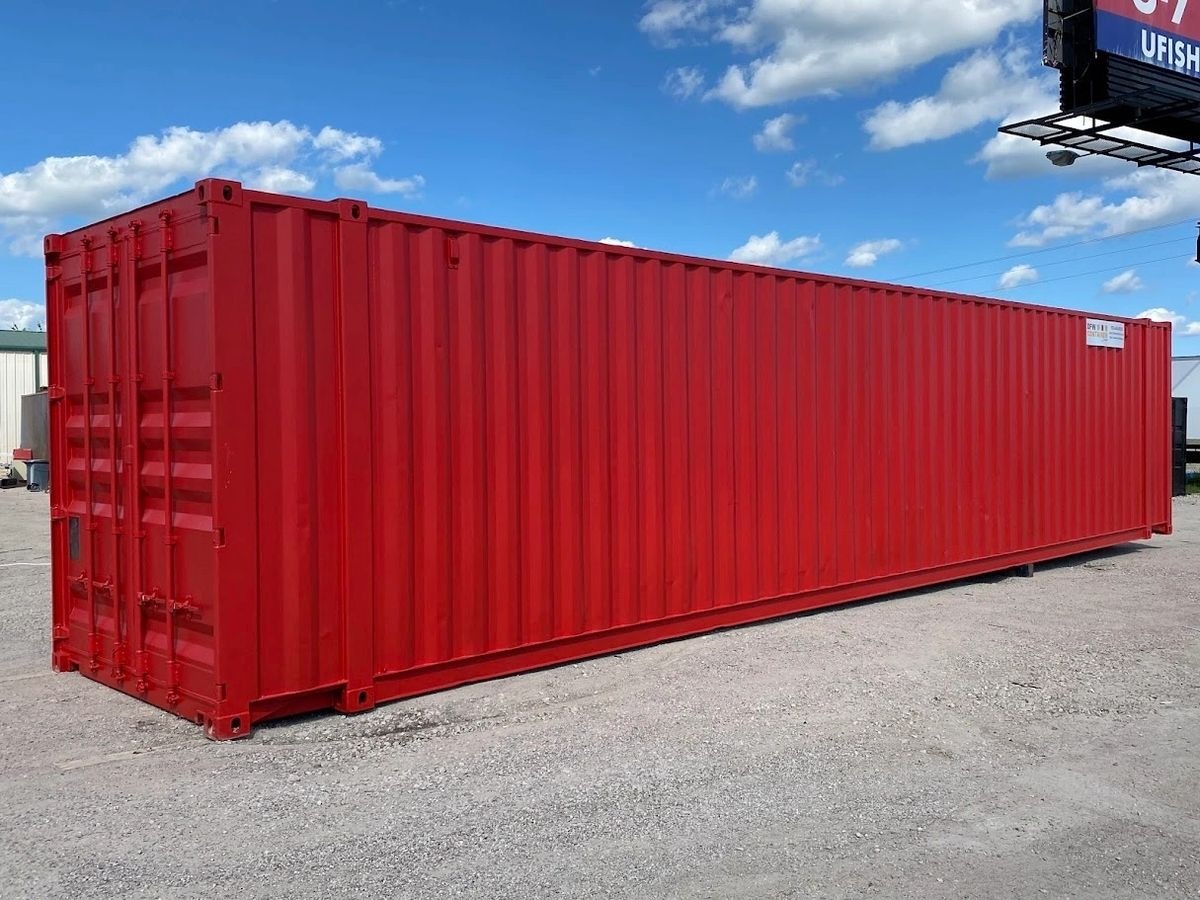The Top 5 Reasons People Thrive In The Conex Containers Industry

Discovering the Versatility of Conex Containers: A Modern Solution for Storage and Transportation
Conex containers, also called shipping containers, are a crucial part of worldwide logistics and storage solutions. These robust steel boxes play a pivotal function in the movement of products throughout the world. However, their applications extend far beyond shipping. This blog site post dives into the versatility of Conex containers, their history, uses, and benefits, and provides answers to some frequently asked concerns.
What are Conex Containers?
Conex containers are standardized metal containers used for transporting products. Originally created for shipping by sea, these containers are now widely used for storage, short-term housing, and even ingenious architectural projects. The term "Conex" stemmed from the term "container reveal," which encapsulated the essence of expedited shipping.
| Container Type | Dimensions (L x W x H) | Capacity (Cubic Meters) | Common Uses |
|---|---|---|---|
| Standard Container | 20' x 8' x 8.5' | 33.2 | Shipping, Storage |
| High Cube Container | 40' x 8' x 9.5' | 76.4 | Storage, Office Space |
| Refrigerated Container | 40' x 8' x 9.5' | 67.1 | Food Transport, Medical |
| Open Top Container | 20' x 8' x 8.5' | 33.2 | Bulk Cargo |
The Evolution of Conex Containers
The history of Conex containers dates back to the early 1950s. The intro of the ISO standardization permitted intermodal transport, facilitating seamless cargo motion by rail, road, and sea. The standardization also guaranteed toughness and security, making them ideal for long-distance journeys. Over the years, the design and structure have progressed to include modern-day amenities, consisting of insulation for temperature-sensitive goods and integrated RFID innovation for tracking shipments.
Versatility in Applications
One of the most impressive aspects of Conex containers is their adaptability. Here are some common and ingenious uses:
1. Shipping and Logistics
- Core Purpose: Transportation of items throughout oceans and continents.
- Intermodal Transportation: Easily transferred in between ships, trains, and trucks, enhancing efficiency.
2. Storage Solutions
- Ad hoc Storage: Ideal for domestic and business storage solutions.
- Security: Steel structure provides high security against theft.
3. Modular Construction
- Eco-Friendly Buildings: Can be repurposed for property and commercial building and constructions, promoting sustainability.
- Quick Deployment: Construction time is significantly reduced compared to conventional approaches.
4. Pop-Up Shops and Cafés
- Short-lived Retail: Used increasingly by businesses for pop-up occasions due to their mobility.
- Customizable Designs: Individuals can personalize the containers to reflect brand name visual appeals.
5. Emergency and Disaster Relief
- Short-lived Shelters: Can be converted into homes or centers after natural disasters, providing immediate shelter.
- Storage for Supplies: Used to store medical or food products in crisis circumstances.
Key Benefits of Using Conex Containers
Conex containers present numerous benefits across numerous applications:
Durability and Strength
Constructed from premium steel, these containers are designed to endure severe weather conditions and are resistant to deterioration.
Cost-Effectiveness
Compared to traditional construction approaches or storage centers, Conex containers are a budget-friendly option. Their schedule in the used market can substantially lower costs.
Customizability
Containers can be modified to fit specific requirements, consisting of the addition of windows, doors, electrical systems, and HVAC systems.
Movement
Easily easily transportable, they can be moved utilizing trucks or cranes, making them a perfect choice for moving offices or short-term setups.
Security
Lockable and strong in nature, Conex containers provide an added layer of security for valuable goods.
Often Asked Questions (FAQ)
1. How much do Conex containers cost?
The cost of a Conex container differs extensively based upon size, condition (new vs. used), and modifications. Normally, used containers can vary from ₤ 1,500 to ₤ 3,500, while new containers might cost between ₤ 3,000 and ₤ 5,000.
2. Do Conex containers require licenses for installation?
It depends on regional regulations. Numerous municipalities require permits for container use, especially if they are modified or used for domestic purposes. Always check local zoning laws.
3. What is the life expectancy of a Conex container?
A well-kept Conex container can last between 10 to 25 years, depending upon environmental conditions and usage.
4. Can Conex containers be insulated?
Yes, containers can be insulated to guarantee heat in chillier climates or to control temperature-sensitive merchandise. Expert insulation methods exist to maintain structural stability.
5. Are COG Containers ?
Yes, repurposing Conex containers for various uses can decrease waste and lower the carbon footprint associated with conventional construction methods.
6. How do I select the best size Conex container?
Consider the desired usage, storage requirements, and available space. Requirement sizes include 20-foot and 40-foot containers, but there are several sizes offered to fulfill different requirements.
Conex containers represent a significant development in worldwide logistics and provide varied solutions in construction, storage, and beyond. Their effectiveness, flexibility, and cost-efficiency make them a necessary tool in various markets. As society continues to evolve, so will the function of Conex containers, leveraging their potential in both conventional logistics and innovative architectural styles. Accepting the adaptability of Conex containers not only addresses instant requirements but likewise supports sustainable practices in our modern-day world.

